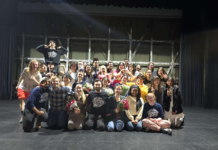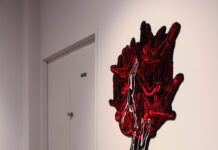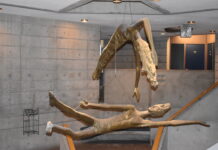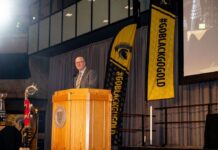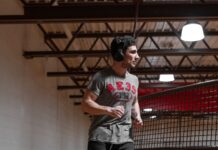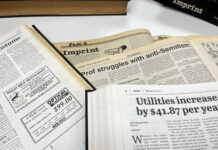When asked to think of places that are car-free, many might conjure up images of parks, malls, squares, amusement parks, farmers markets, and waterfronts. What these places have in common is that more often than not, such locations are not part of our daily routine. While these places most certainly have the potential to be pleasant and genuine centres of activity, we often visit them in passing or because we crave the people-focused environments they create. But why must we go out of our way to enjoy the benefits of these spaces? Why has our society become so centred around automobiles and mobility rather than the people such machines ultimately serve?
Without delving into the deep history of auto-centric design in Canada, it is critical to recognize its impact on humans. This design creates social isolation as most spaces within our cities are designated to traffic movement and vehicle parking, making it difficult to interact with others even while on foot. It disadvantages people that cannot drive because of class, age, or disability, making our cities inaccessible to large numbers of people. It is both costly to maintain road and car infrastructure as well as being a detriment to the environment through associated GHG emissions. It also harms small businesses as people do not explore areas on foot to discover new places. Lastly it is harmful to our public health due to road accidents, noise and air pollution, and low levels of activity transportation leading to diseases such as obesity. Pedestrians are more likely to walk in places they deem “walkable”, like UpTown Waterloo perhaps. Wide roads with high speed limits and narrow sidewalks lined by plaza parking are not environments people consider safe or pleasant.
With a clearer understanding of the benefits of car-free areas, we can consider the main space UW students experience this: the university campus. University is a place where students go to class, study, eat, participate in clubs, play sports, workout, attend events, and meet friends. It is a place where professors and staff work for much of the day. Whether at UW or anywhere else, students and staff deserve to experience the physical and mental health benefits of a true pedestrian zone, especially as so much of their day has the potential to take place there. The university certainly offers a human-centric space, though the degree to which should be assessed.
Let’s start by talking about the roads that do exist on campus. Ring Road is no doubt the main one, with speed bumps, bus service, and one-lanes in each direction. Though that is certainly better than more intimidating roads off-campus, there is still much room for improvement. The lack of trees, width of lanes, and lack of posted speed limits encourages drivers to drive fast, making crossing more dangerous for pedestrians. Installing planters and more benches along the roadway would help both beautify the area and slow down traffic. Converting Ring Road to a ‘shared street,’ where road surfaces are fully- or mostly-level with the sidewalk and use different road materials such as interlocking brick, would be most effective. It would make drivers uncomfortable and force them to drive slower and be more attentive due to the lack of clear separation between the realm of cars and people, and allow pedestrians to feel more comfortable crossing wherever necessary. This should be the ultimate goal as Ring Road serves as an access road rather than one for through traffic.
The campus also features several parking lots, though not an obscene amount. While many students might have a gripe with this as they rely on their cars to get to school, which is understandable, it makes campus a much more human-centric place and prevents excessive traffic on the inner roads. However, the parking lots inside campus along University Avenue and Columbia Street create unpleasant spaces for pedestrians often coming to and from bus stops along these roads, who face physical features acting as purposeful barriers to crossing. Ultimately, the current parking areas should be maintained without significant expansion, especially as the bus station and ION LRT provide excellent transit connection.
Across campus, foot traffic certainly reigns dominant, providing a safe and pleasant space for students and staff. There are outdoor paths to most buildings along with a system of tunnels and bridges between certain buildings, which can be most appreciated in the winter time. This is one of the strongest points of the campus and certainly one that is not present in many other ones across the province and country. It would be beneficial to have better mapping, signage, and lighting in many of the tunnels as they are difficult to navigate and arguably unsafe during less busy hours.
Discussing the pedestrian paths on campus with 2B math student Stuart Caughell, the issue of cars driving on these paths was brought up. While marked university vehicles and delivery trucks present little to no problem, there are often other cars that do not respect pedestrians as much. These are often the vehicles of construction workers, though it does not make sense for them to have to park on-site. Sometimes they might be random road users who are driving there illegally. Caughell described these cars as a “nuisance,” not seeing them as a serious risk to safety but certainly an uninvited presence. It is saddening to see in one of the few pedestrian zones in our community, cars still meander their ways in.
There is potential for an excellent car-free space on UW’s main campus. I can personally say that campus provides great relief for me on a regular basis from the largely suburban design of the Waterloo Region. Not having to listen to cars whizzing by and worrying about constantly looking left and right while walking around provides peace of mind. But if the university does not continue improving this experience for its students, employees, and visitors, it will never attain its true potential as a genuine pedestrian space.







